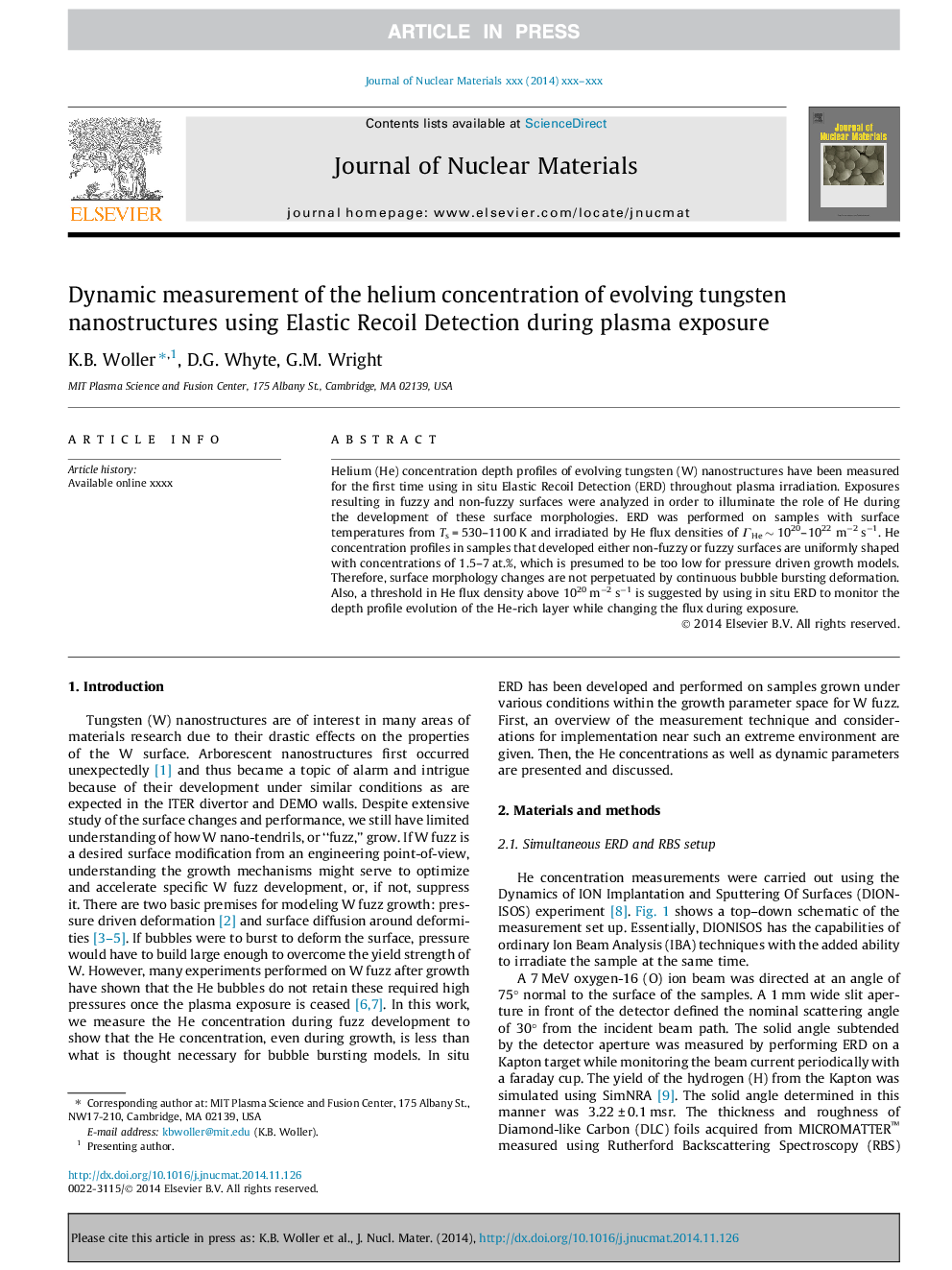| Article ID | Journal | Published Year | Pages | File Type |
|---|---|---|---|---|
| 7965717 | Journal of Nuclear Materials | 2015 | 5 Pages |
Abstract
Helium (He) concentration depth profiles of evolving tungsten (W) nanostructures have been measured for the first time using in situ Elastic Recoil Detection (ERD) throughout plasma irradiation. Exposures resulting in fuzzy and non-fuzzy surfaces were analyzed in order to illuminate the role of He during the development of these surface morphologies. ERD was performed on samples with surface temperatures from Ts = 530-1100 K and irradiated by He flux densities of ÎHe â¼Â 1020-1022 mâ2 sâ1. He concentration profiles in samples that developed either non-fuzzy or fuzzy surfaces are uniformly shaped with concentrations of 1.5-7 at.%, which is presumed to be too low for pressure driven growth models. Therefore, surface morphology changes are not perpetuated by continuous bubble bursting deformation. Also, a threshold in He flux density above 1020 mâ2 sâ1 is suggested by using in situ ERD to monitor the depth profile evolution of the He-rich layer while changing the flux during exposure.
Related Topics
Physical Sciences and Engineering
Energy
Nuclear Energy and Engineering
Authors
K.B. Woller, D.G. Whyte, G.M. Wright,
